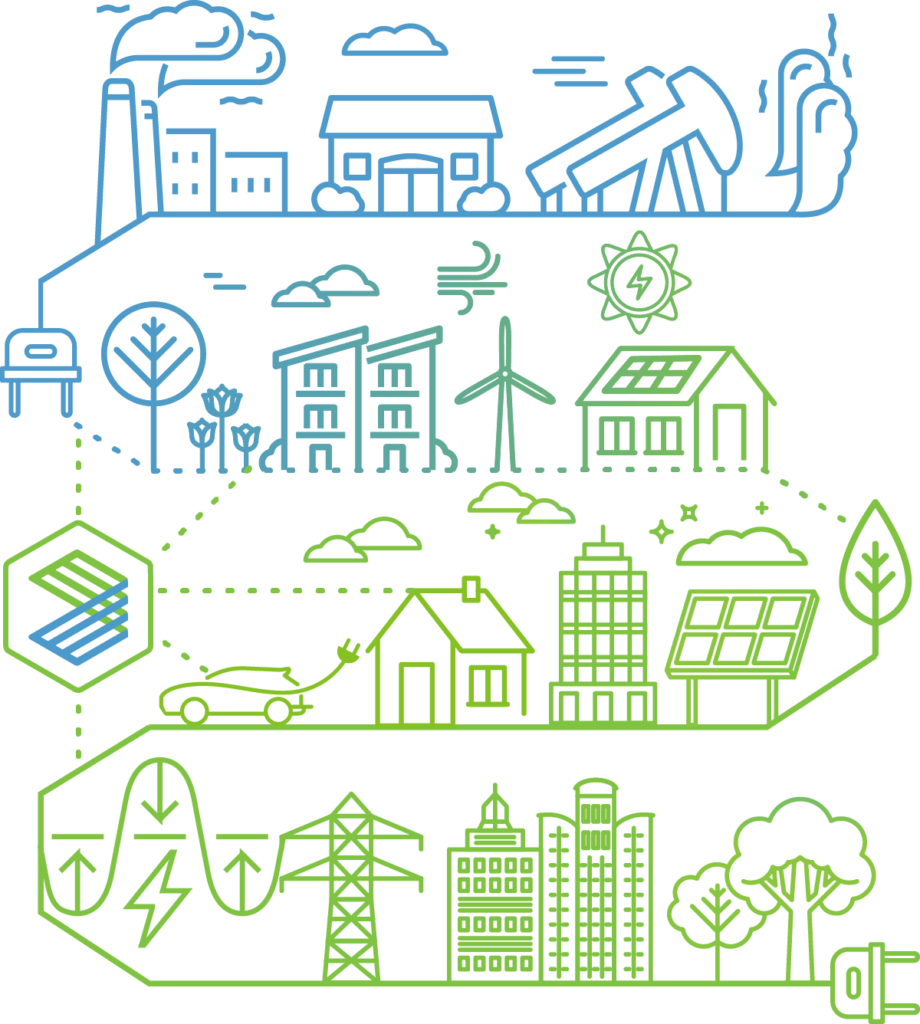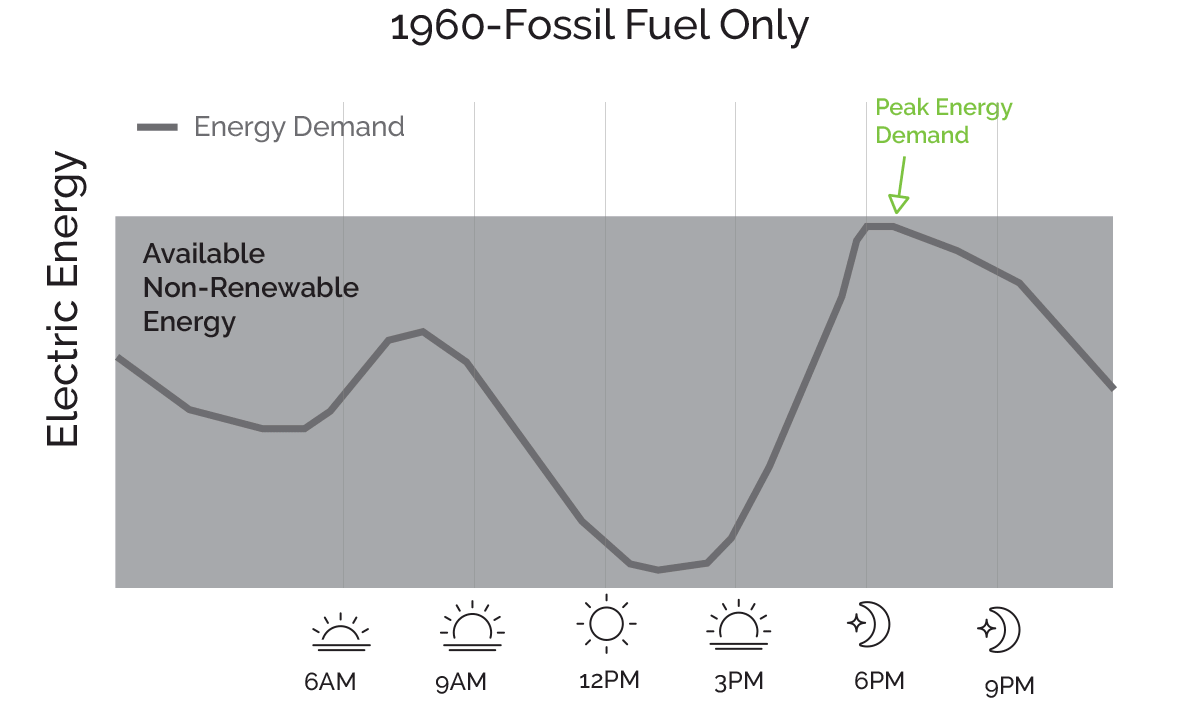
Energy Transition Challenges
Fighting Climate Change Through Decarbonization
The U.S. Has Committed to a Fully Decarbonized Grid by 2035.
Despite our best intentions, we are far from this goal. Strategic Electrification is a crucial piece of the puzzle.
What is Strategic Electrification?
Strategic electrification is the transition from fossil fuels to carbon-free renewable energy in both transportation and buildings.

These Are the Challenges Standing in Our way:
Power flow is now two-way

Challenge
The electric grid is the most complex machine humans have created. Until now, it follows a basic principle – energy is generated and used instantaneously.
Historically, power flow was unidirectional – from generator to customer.
Now that equation is changing. Homes and businesses can now produce their own energy for their own use, and sell their excess back to the grid.
Now and in the near future, we see rapid increases in both supply and demand. Our current distribution grid is not up to the challenge.
What Needs to Change
A centralized grid structure cannot meet the needs of bi-directional energy flow.
A decentralized grid structure allows for flexibility needed when power is flowing both ways.
Instead of sinking trillions of dollars into infrastructure updates to maintain an outdated system, technology can step in to decentralize the grid for a more sustainable future.
Dynamic Grid Solution
FlexDR accommodates bi-directional flow and allows consumers to participate in both generation and demand control.
Here is how it works:
- Manages flexible demands, energy storage and distributed energy resources
- Uses market principles to respond dynamically to electricity availability and shapes demand to better utilize available resources
- Allows autonomous devices to respond in real-time to avoid overburdening the grid
The Duck Curve – Energy Generation vs Demand

Challenge
There is a gap between the times of day where solar and wind generation are plentiful – during the day – and when energy consumption peaks – typically the evening.
The time difference in energy consumption vs generation is often represented graphically as a “duck curve”. This carries over to the distribution grid, where individual circuit “duckling” gaps occur locally.
Because most residential energy demand is when energy is scarce, the grid must use environmentally unfriendly fossil-fuels.
What Needs to Change
The grid of the future needs to be flexible and respond in real time to both energy supply and demand.
Flexible loads ramp up and down as needed to help balance supply and demand, without sacrificing consumer comfort.
Energy storage can reduce the reliance on fossil-fuel backup. By storing renewable energy when excess amounts are available, storage can serve as a backup when demand is high.
While individual storage systems exist, they need to be implemented on a large scale in order to address the duck curve.
Dynamic Grid’s Solution
FlexDR provides one platform for real-time controls and efficient energy storage.
Here is how it works:
- Algorithms that give the distribution grid the flexibility to adjust to energy supply
- Responds in real-time
- Integrates scalable storage fully into the distribution grid
Variable Loads

Challenge
A critical part of strategic electrification is converting the use of fossil-fuel to renewable electricity in transportation and buildings. This includes EVs (Electric Vehicles) and heat pumps.
EV charging stations and heat pumps are both variable loads. When active, they require large amounts of energy, and no energy when inactive.
Our current electric grid has limited ability to meet these huge swings in energy demand.
What Needs to Change
The electric grid needs to balance variable loads so they don’t overburden the system.
Currently, the grid cannot precisely control variable loads. But with the right equipment, the grid can remain in balance by modifying EV and heat pump operations.
Dynamic Grid’s Solution
FlexDR balances variable loads on the distribution grid automatically, without overburdening the system.
FlexDR is:
- Scalable
- Cybersecure
- Cost-efficient
